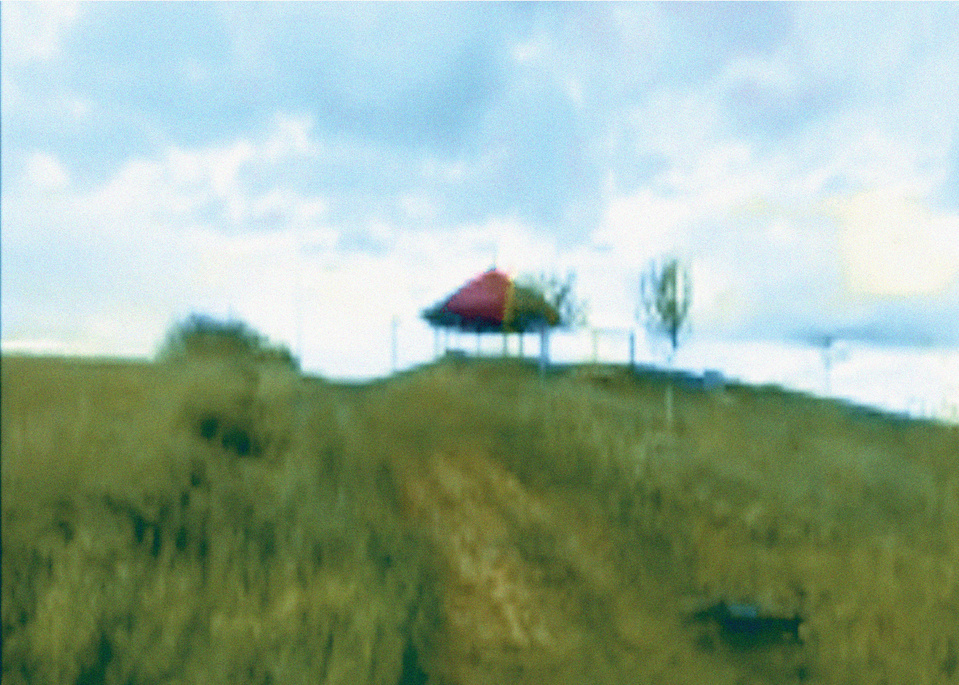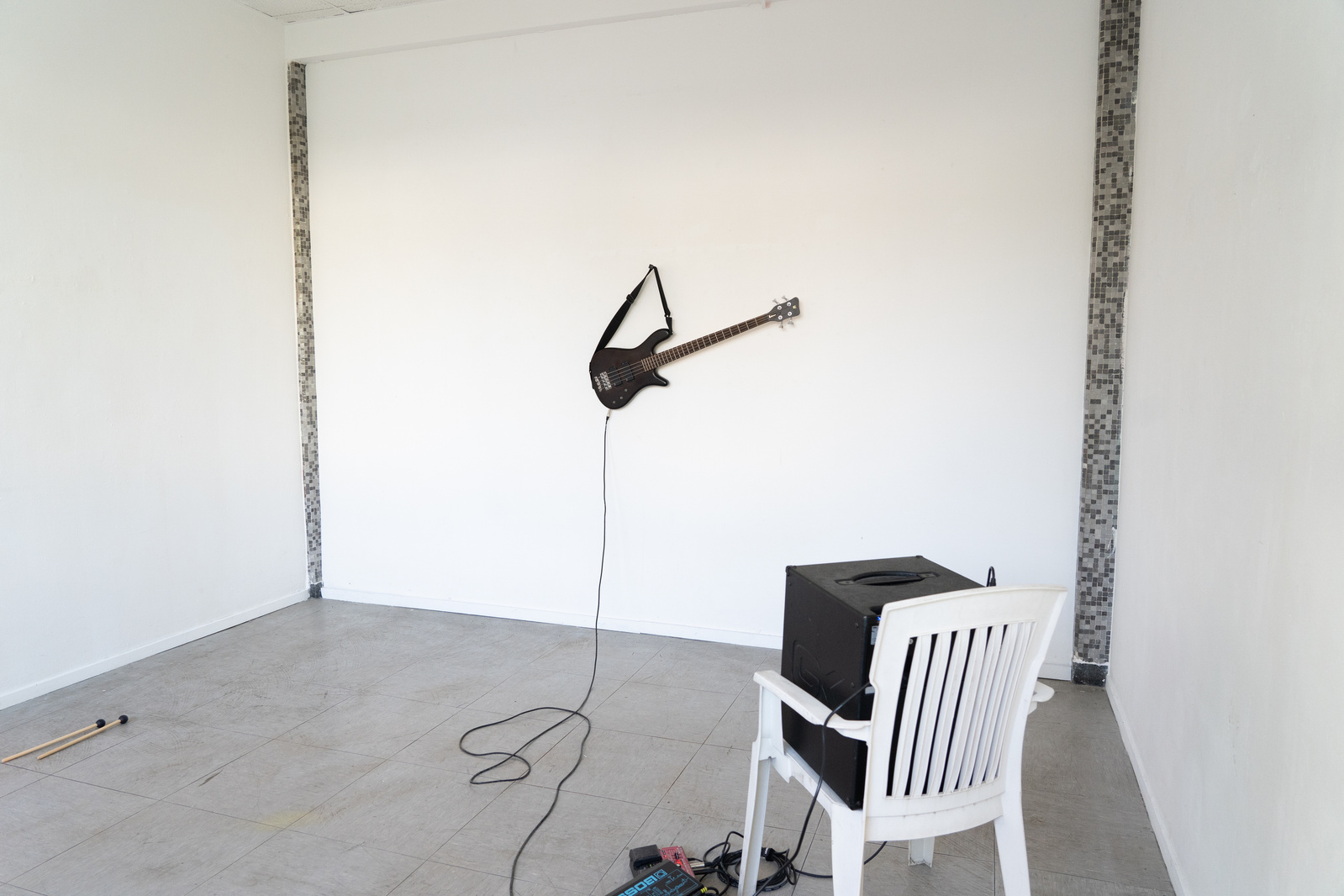The Two Beasts of the Apocalypse
2018/23, bass guitar, pedalboard, bass amp, mallets, rug threaded with climbing rope, iron cast nails, light installation, printed drawing
shot by Philomena Hummels
* * *
KONVERSION
Beginning with an idea of a simultaneous group performance, Konversion is an exhibition of
process, highlighted by the performance and installation works of Luca Ganz, Amparo Lippek
and Orell Kötter. Each of the artists uses their own nature — the accessible resources of their
individual environments — and together they start a process of mutual conversion, converting
into one another in order to create a continuous exchange of references.
Tension is punctured and frozen on the wall, so that it can’t find its immediate release and give
itself up to gravity. Luca Ganz invites a common god, Twombly’s Bacchus, into the exhibition
room and like many before, shows his crucifixion and doesn’t let him bleed. Whether this
crucifixion is for Bacchus’ involvement in humanity and its enjoyment of hedonistic states, such
as ecstasy, creativity and celebration, or just out of pure enjoyment of powering over a god,
Ganz confronts the viewer with the crucifixion and demands introspective reflection within
oneself to find some kind of release, individual or collective alike. Yet, in the group performance,
Ganz offers a sound that plays with the repetitive. The trance can’t help but move along to the
other actions in the room, the sounds bleeding into something alive and human.
Amparo Lippek gives loss a body, a voice, a canvas and time. Relating to a previous loss of
a friend, its shapes are inscribed on a canvas of Lippek’s two homes — the earth of Malaga,
Spain and Hessen, Germany. A trance ensues, entranced moves continue into the soil. What
is left could be what was lost, or it is just the debris of Lippek’s own healing. Though in the
performance, loss is moving and reacting, it is also depicted as constant, housing stories
across time. As a ruin, loss reflects on its surroundings and shares memories, letting its visitors
in for closer inspection as it builds itself up again. Lippek offers proof of a distant connection
that through active conversion can be given a new, more strong form.
The process of uncovering what is hidden and the offering of transparency between the artist,
viewer and the artwork is the starting point of Orell Kötter’s works in the exhibition. Invisible
poems written in lemon juice become seen over a flame and can be read and heard over
the actions of the group performance. The step-by-step performance of the poems in lemon
emphasizes the active choice to make every part of the artist’s process and result transparent.
A resourceful method perfect for exchanging secrets is used to relief art of its established
mystery. Kötter pushes the hierarchy between the artist, viewer and artwork even further
by inviting the viewer to make a choice in having a hand in the artwork. Nevertheless, these
actions are made audible, an omnipotent surveillance amplifies every sound.
Konversion shows the artist’s individual process’ and their mutual influence on another. As an
exhibition of process, it culminates in the endurance performance of the three artists, leaving
their collaboration take shape in individual works across the gallery space.
Written by Mara Aiko, Photo Credits: Philomena Hummel



